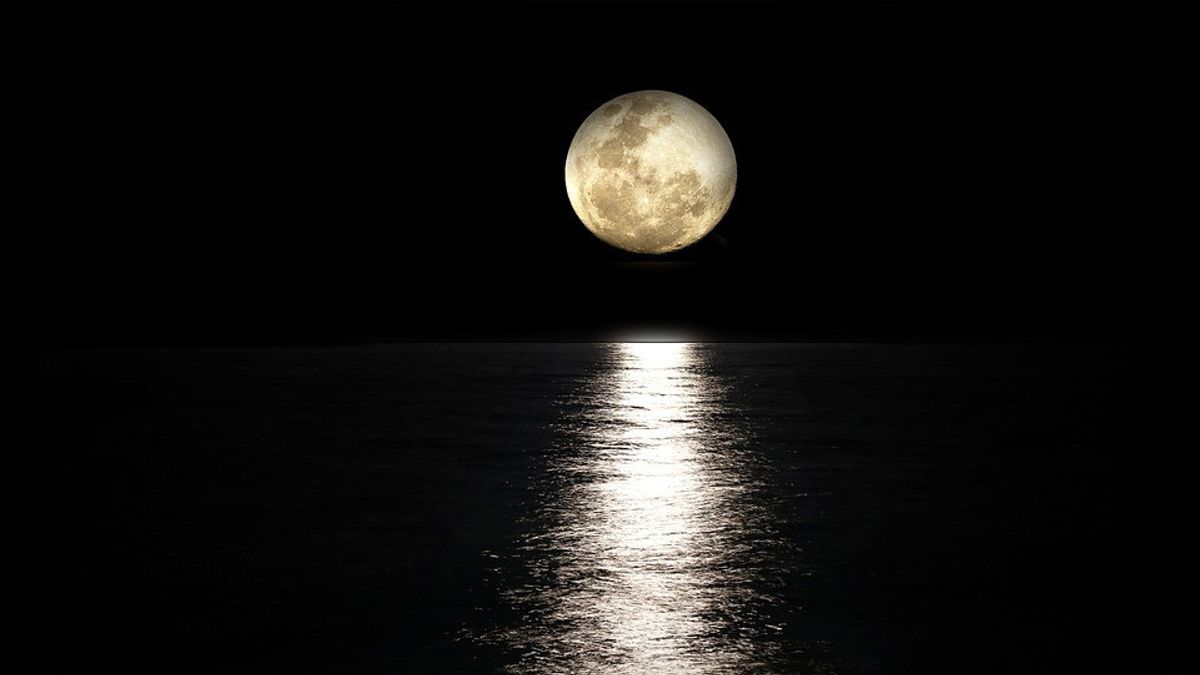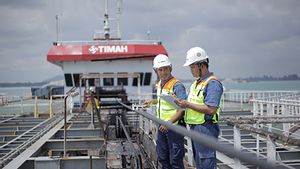JAKARTA - The European Space Agency (ESA) wants to provide a lunar time zone because humans are expected to work and eventually live on the lunar surface. The idea has been circulating since last year, but ESA and international partners are moving forward to set a 'general month reference time' to be accepted by all countries sailing in space.
Currently, the lunar mission is operated by a country that operates a spacecraft. The team studying the timing of the moon is discussing whether a single organization should set and maintain time on the moon, but they are investigating technical issues.
Hours travel faster on the moon than on earth, experience about 56 microseconds daily, and tick-tocks differ on the lunar surface than in lunar orbit. More importantly, the timing of the moon should be practical for astronauts there, according to Bernhard Hofenbach of the space agency.
This news comes as several countries are looking for ways to launch lunar missions, especially American space agencies. NASA is aiming for 2025 for a time when they will put human boots back on the moon - for the first time in more than 50 years.
This is part of the Artemis program, which completed the first phase late last year. The upcoming part is Artemis II, which will send NASA astronauts around the moon in 2024.
"This will be a sufficient challenge, with each day lasting 29.5 Earth days," Hofenbach said in a statement, quoted by the Daily Mail. "But after successfully building a working time system for the moon, we can continue to do the same for the purpose of other planets."
Talks about creating special time for last month were discussed in a meeting at the ESA ESTEC technology center in the Netherlands. European space officials said the internationally accepted lunar time zone would make it easier for everyone, especially when more countries and even private companies aim to explore the moon and NASA is getting ready to send astronauts there.
NASA had to struggle with a question of time when designing and building an International Space Station, which is close to its first 25-year launch anniversary. While the space station does not have its own time zone, it runs on Universal Tersinkron Time, or UTC, which is based carefully on atomic clocks.
This helps divide the time difference between NASA and the Canadian Space Agency as well as other partner space programs in Russia, Japan and Europe.
Jörg Hahn, Galileo's main engineer at ESA who also provides advice on aspects of lunar time. According to him, time interoperability and geodesic reference frame have been successfully achieved on Earth for the Global Navigation Satellite System; all smartphones today can use existing GNSS to calculate user positions up to meter level or even decimeters.
"This experience of success can be reused for the upcoming long-term lunar system, although keeping time stable on the Moon will pose its own challenges - as taking into account the fact that time goes at different speeds there due to the influence of gravity and the Moon's particular speed," said Hanh, quoted by the Daily Mail.
The English, Chinese, Japanese, Arabic, and French versions are automatically generated by the AI. So there may still be inaccuracies in translating, please always see Indonesian as our main language. (system supported by DigitalSiber.id)













